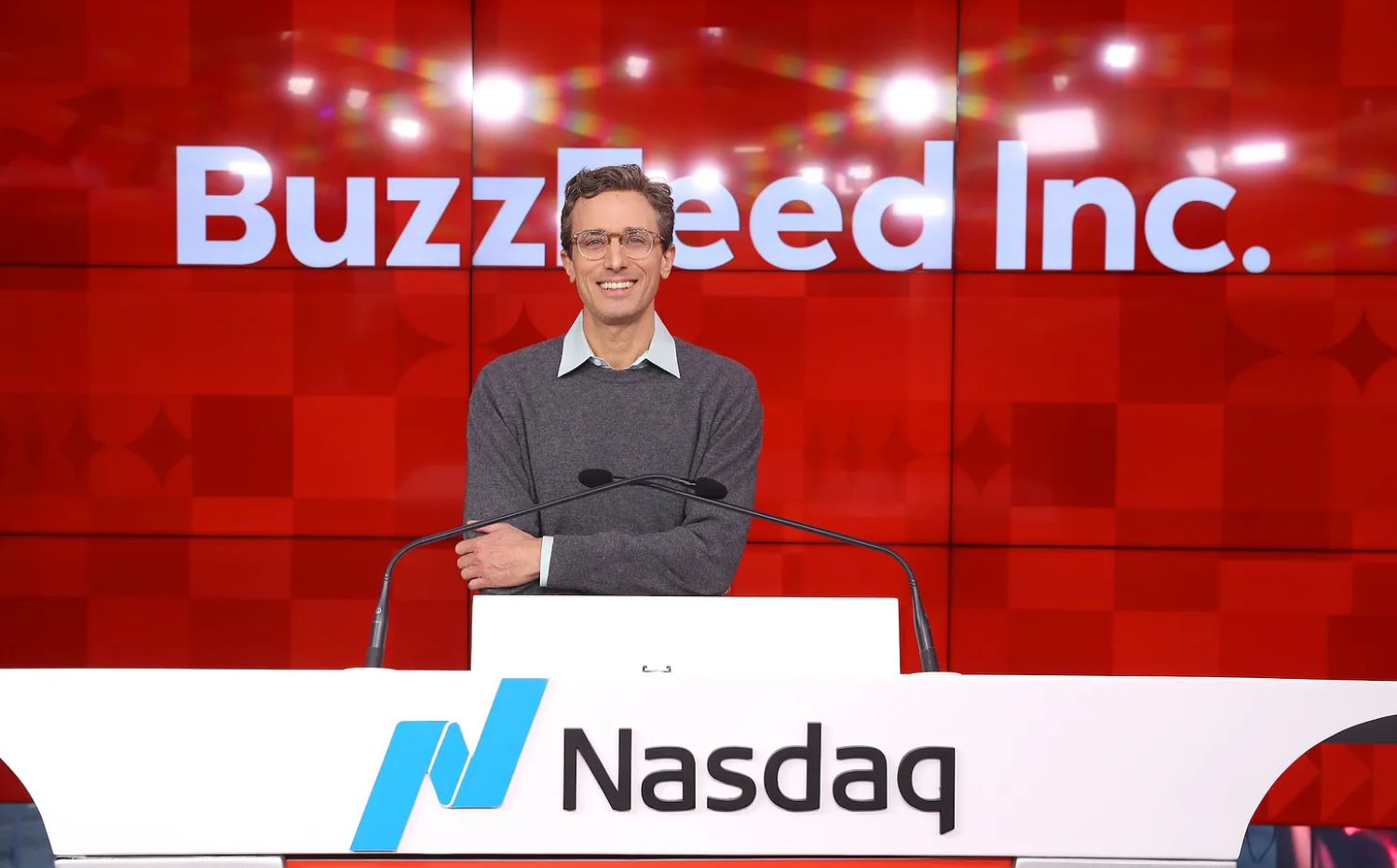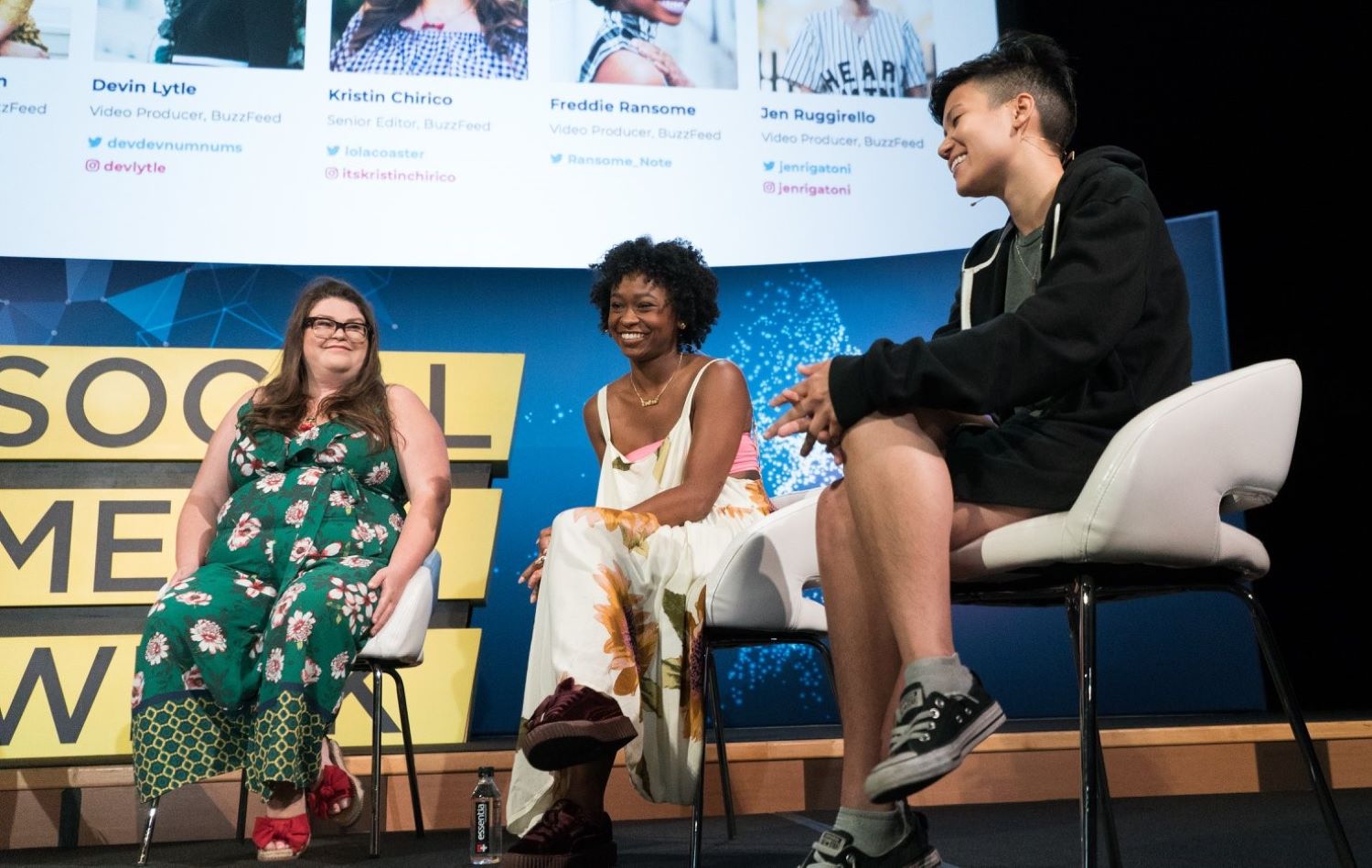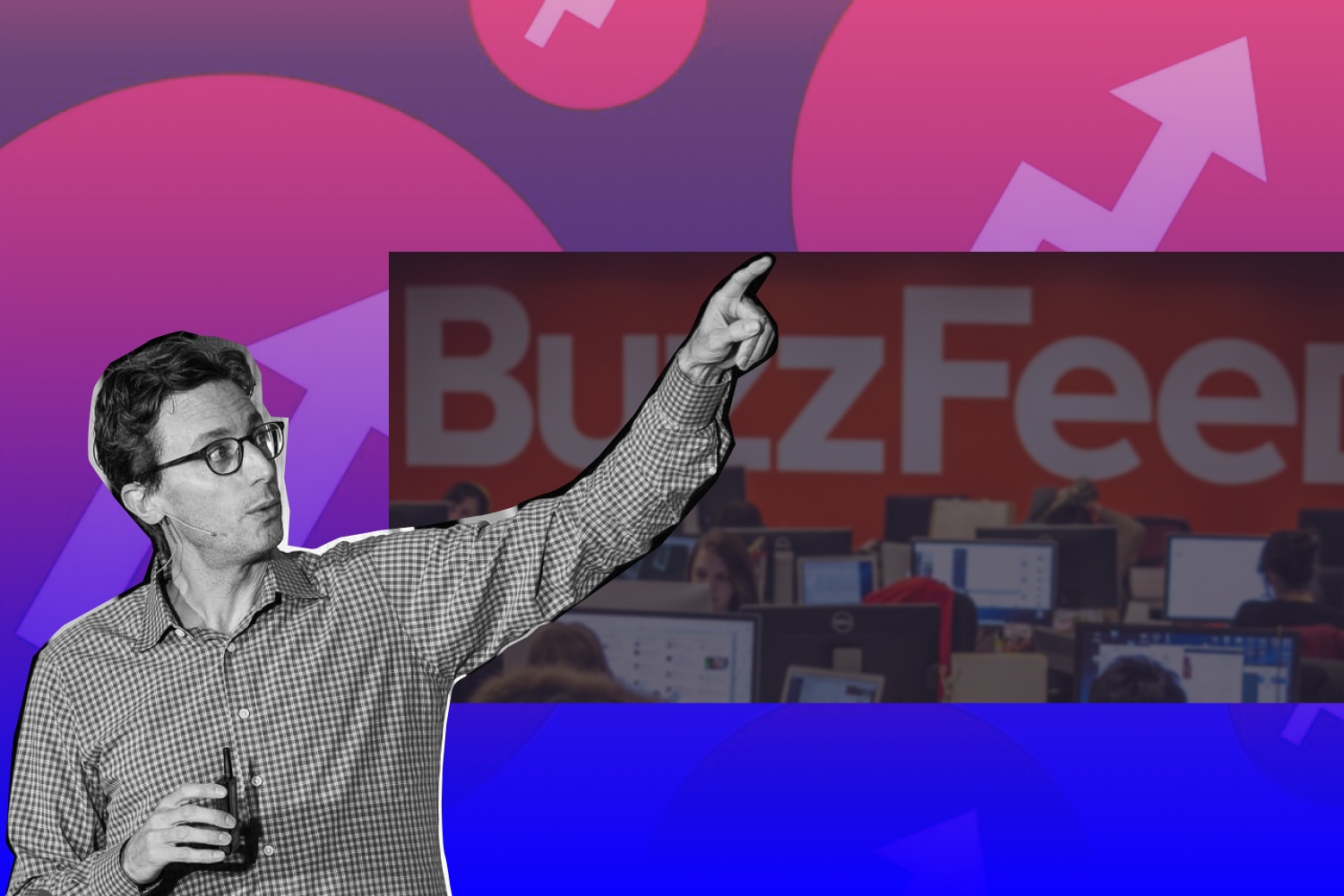Jonah Peretti’s Media Stardom: From Sweatshop Emails to Digital Glory
Established in 2006, BuzzFeed swiftly became a powerhouse in the media industry, harnessing the transformative power of social media platforms such as Facebook, Twitter, and YouTube.
As one of the foremost digital media companies globally, BuzzFeed’s meteoric rise can be attributed to its unparalleled ability to create content that not only resonates with audiences but also possesses the elusive quality of going viral.
The impact of BuzzFeed’s content strategy is reflected in its staggering valuation of around 1.5 billion dollars in 2015, underscoring the company’s prowess in navigating the digital landscape.
Before that, BuzzFeed’s roots can be traced back to Jonah Peretti’s student days.
Jonah Peretti: From Viral Nike Emails to BuzzFeed’s Media Revolution
Peretti, a graduate in environmental studies from UC Santa Cruz, initially took a teaching job in New Orleans before delving into the realm of computer science. His academic pursuits led him to MIT, where he pursued a master’s degree and found himself exploring the fascinating world of viral media, long before the term gained widespread recognition.
In 2001, during the final stages of his tenure at MIT, Jonah Peretti found himself procrastinating, drawn by the novelty of Nike’s newly launched shoe customization service.
Instead of focusing on his master’s thesis, Peretti embarked on an experiment to test the limits of the system, attempting to input various words under the iconic Nike swoosh.
“I first tried a four-letter word, and it rejected it, and so I was trying to figure out how the system worked. They had blacklisted a bunch of words. … And then I put the word ‘sweatshop’ in, and it went through.”
His initial attempts were met with rejection as he navigated the system’s blacklist of prohibited words. However, a pivotal moment occurred when Peretti decided to input the word ‘sweatshop,’ and surprisingly, it went through the system.
The next day, Nike responded by rejecting the order, deeming the term ‘sweatshop’ as inappropriate slang. Unfazed, Peretti defended his order, highlighting that the term was a legitimate word in the dictionary, denoting a place where workers toil in unhealthy conditions. In a witty response, he concluded, “Now can you send me the shoes?”
The ensuing email exchange, marked by Peretti’s clever retorts, caught the attention of friends and soon became an early example of content going viral. Despite the absence of the widely recognized term “going viral” at the time, Peretti’s creation reached millions of people as it was forwarded through emails.

The widespread dissemination of Peretti’s email led to unexpected consequences. Nike continued to reject the order, and the email exchange evolved into a public discourse on sweatshop labor. Peretti found himself on the Today Show, sharing the stage with Nike’s head of global PR and Katie Couric, discussing an issue he initially knew little about.
This accidental foray into viral content not only exposed Peretti to the immense power of digital dissemination but also paved the way for future collaborations.
The viral Nike email caught the attention of media veterans Ken Lerer and Arianna Huffington, leading to the founding of the Huffington Post in 2005.
Following the success of HuffPost, Peretti continued to explore the evolving landscape of media distribution.
“I learned a lot at Huffington Post about building a business and start-ups, but there were still things I wanted to figure out about media,” … “What does it mean when people can share media and become the distribution? … I couldn’t do it at HuffPost, so I started BuzzFeed as a lab where I could continue to play and do research and experiment,” he shared.
In 2006, Peretti founded BuzzFeed, initially as a side project, with the aim of unraveling the mysteries of media consumption in the age of digital sharing.
BuzzFeed allows Peretti to delve into the dynamics of user-generated content and the role of social media in shaping media landscapes.
“BuzzFeed started as a lab with a small team where we would play with ideas,” Peretti said.
The Shift from Individual Preferences to Social Sharing Dynamics
In 2011, the landscape was ripe for the emergence of a social media brand. BuzzFeed entered the scene when Facebook was just two years old, and Twitter had recently launched that March, initially taking time to gain widespread recognition.
The evolving dynamics of the web made it an opportune moment for Jonah Peretti’s ambitious vision to take center stage.
As Facebook and Twitter gained prominence, BuzzFeed broke free from the restrictive approach of tailoring its content for search engines such as Google.
This shift occurred because sharing took precedence over searching as the primary means through which people discovered BuzzFeed content.
“We’ve spent two years not looking at Google search numbers,” Peretti stated, “A sort of ‘aha’ moment for me was when I got a few emails from people saying, ‘I didn’t find anything good to share on BuzzFeed today, I’m upset.”
Peretti recognized that visitors were not merely seeking entertainment on his site; rather, they were looking for content to share with family, friends, and followers on platforms like Twitter.
“That means we can’t have an algorithm that is targeting content only a reader will like,” Peretti said. “They want to see content that someone else in their life that they care about will like, even if they don’t like it very much. At The Huffington Post, we thought of the front page as a one-stop shop for everything you’d need in the news. And Google is just a search box and you, and that’s all you personally need.”
“Now we’re faced with a different environment where you’re thinking about these networks of people who are sharing with other people in their lives, and that changes how you think about your front page.”, he added.
Although Peretti acknowledges the importance of direct traffic to BuzzFeed, where users actively type in “buzzfeed.com” as a regular destination, he places a higher value on readers sharing articles via platforms like Twitter.
According to Peretti, Facebook holds greater influence as a traffic driver than direct visits, constituting “well over 50%” of BuzzFeed’s total visitors. Despite some critics dismissing popular content, Peretti sees the act of users sharing content with friends as a crucial measure of its quality.
“I care a lot about the quality of the content we create,” said Peretti. “I care about if we’re moving the conversation, and does our reporting move the conversation? I care about telling the public new information and breaking a story. I care a lot about whether we’re consistently creating content that people think is worth sharing. I think about unique visitors as a proxy for, if people are sharing our content, then that should grow our uniques.”
“There are things we could do to juice our uniques that we don’t do, and there are things we can do to juice our pageviews that we don’t do. We’re focused on the long term of having really healthy metrics and having people really love the site.”, he added.
One of BuzzFeed’s initial viral successes involved a meme they crafted named “Disaster Girl.” The meme featured an image of a girl standing in front of a house engulfed in flames, sporting a mischievous expression as if she were responsible for the fire.
“That was an early one where we felt like we were participating in the creation of culture, not just saying what’s hot,” Peretti said.
Viral Advertising Strategy: Revolutionizing Native Ads and Ditching Banners for Success
BuzzFeed’s ambition extends beyond creating viral content for itself; it aims to bring advertisers into the realm of virality as well.
Recognizing the appeal of sponsoring articles that reach millions of readers, BuzzFeed has taken strategic steps to enhance its “native” advertising—ads seamlessly integrated into and complementing BuzzFeed’s content, departing from traditional banner ads.
To spearhead this initiative, BuzzFeed brought on Jeff Greenspan, a former ad-agency executive and Facebook veteran, as its chief creative officer.
The goal is to make native advertising an engaging and integral part of BuzzFeed’s content rather than a mere presence on the same page. However, achieving guaranteed viral success is challenging, and convincing media buyers, particularly younger ones, to invest additional effort in purchasing less conventional ad placements can be an obstacle.
Jonah Peretti emphasizes that their ad team, led by BuzzFeed president Jon Steinberg, engages in discussions with chief marketing officers of brands rather than junior buyers. They actively seek out advertisers and agencies with open-minded approaches.

As BuzzFeed accumulates successful campaigns, such as the notable “Razorbombing” campaign for Schick’s Shave the World, which garnered around 19 million views on BuzzFeed alone, the task of persuading potential clients becomes more straightforward.
Peretti emphasizes the appeal of creating innovative campaigns, like a BuzzFeed Time Machine sponsored by GE, as opposed to traditional banner ads.
The objective is to collaborate with forward-thinking individuals and companies, proving the effectiveness of customized content sponsorships and alleviating fears surrounding such approaches in the advertising landscape.
Today, BuzzFeed has taken a bold approach by eliminating traditional banner ads from its site. Instead of relying on the conventional media revenue source, the company is projected to generate approximately $20 million this year, according to industry insiders.
Jonah Peretti also emphasizes the need to reimagine advertising by moving away from the limitations of banner ads. He contends that the key is to provide a larger canvas, such as a full post, for advertisers to create catchy and engaging content.
This departure from the norm has proven successful for BuzzFeed, allowing it to secure $15.5 million in funding last year. Rumors suggest that the deal valued the company at an impressive figure of up to $150 million.
Release of Unverified Dossier: Controversies and Unintended Consequences
Besides, BuzzFeed sparked a heated discussion on journalistic ethics when it chose to release a 35-page document containing sensational but unverified claims regarding potential connections between the Russian government and President-elect Donald J. Trump.
This dossier, crafted by a former British intelligence officer employed by Trump’s political adversaries, had been circulating among top politicians and certain members of the media since autumn.
CNN opted not to disclose the exact claims outlined in the dossier, including allegations of collusion between Mr. Trump’s team and Russian operatives. The network cited the inability to independently verify the information as the reason for this decision.
However, about an hour later, BuzzFeed departed from conventional journalistic norms by publishing the entire document, providing a comprehensive account of the unverified allegations hinted at by CNN.
Expressing his disdain for the dossier, Trump sharply criticized the media outlet BuzzFeed, which published the unverified and explosive allegations. In his words, “I think it’s a disgrace that information that was false and fake and never happened got released to the public… BuzzFeed… a failing pile of garbage. I think they’re gonna suffer the consequences they already are”.
Following the reports from CNN and BuzzFeed, various news organizations, including The New York Times and The Washington Post, rushed to create their own articles. Some of these pieces included broad outlines of the unverified allegations concerning Mr. Trump.
In addition to its immediate impact on the incoming president, who was set to be inaugurated in 10 days, BuzzFeed’s choice was certain to intensify an ongoing discussion about the traditional media’s role and credibility in today’s fast-paced and polarized information era.
The focus of scrutiny included the utilization of unverified information from anonymous sources, a practice that contributed to the spread of so-called fake news—false rumors presented as authentic journalism—during the recent presidential election.
On social media, certain left-leaning writers, typically critical of Mr. Trump, expressed doubt about the document released by BuzzFeed.
Glenn Greenwald, a journalist known for his involvement in publishing Edward Snowden’s leaks on government surveillance, highlighted the anonymous nature of the sources and the lack of concrete details in the document.
Despite facing criticism from President Trump and some fellow journalists, BuzzFeed News Editor-in-Chief Ben Smith remained confident in the decision to publish the full dossier. He defended the move on various platforms, including cable TV shows, Twitter, and in an op-ed for The New York Times.
Smith argued that the choice to publish wasn’t a sporadic decision but rather a modern journalistic approach. In contrast to traditional organizations that start by questioning why they should share certain documents, BuzzFeed, according to Smith, begins by asking, “Why should we suppress this?”
Jonah Peretti expressed a similar sentiment: “It seemed strange that the media elite knew about it, and people at the highest forms of government knew about it, and people were hearing something was out there, but didn’t know what it was,”.
“At that point it felt like, why does everyone get to see this except the public?” – he said.
In the aftermath of the dossier publication, BuzzFeed faced scrutiny to determine if the company believed it would expose itself to legal and financial risks by releasing such materials.
In February 2017, Aleksej Gubarev filed a defamation lawsuit against BuzzFeed, asserting that he was wrongly implicated in the well-known Trump dossier, which the media outlet had published alongside its article.
However, after Aleksej Gubarev filed his lawsuit, BuzzFeed issued a brief one-sentence statement: “We have redacted Mr. Gubarev’s name from the published dossier and apologize for including it.” Subsequently, Peretti and Smith declined further interviews.
BuzzFeed contended that Gubarev, being a limited-purpose public figure, couldn’t prove malice and, thus, the defamation claim should be dismissed. Both parties sought summary judgment on this argument, and U.S. District Judge Ursula Ungaro granted Gubarev’s motion on Tuesday.
Despite acknowledging Gubarev’s increased media access, Judge Ungaro determined that he hadn’t actively engaged in the public controversy surrounding Russian interference in the 2016 election.
While Gubarev provided a statement to Bloomberg on the broader topic of Russian cybercrime when approached by a reporter seeking an expert opinion, the court concluded that this limited involvement didn’t warrant classifying him as a limited public figure.
Market Turbulence and Triumphs: Peretti’s Journey to Public Success
Peretti shed light on the challenges and dynamics of transitioning from a private startup to a publicly traded entity.
He acknowledged the unpredictability of the public markets, highlighting the fluctuating nature of stock prices.

Peretti discussed the challenges they faced during the Special Purpose Acquisition Company (SPAC) process, emphasizing that the market conditions shifted dramatically from being red hot to ice cold.
Despite the challenges, the company successfully went public.
Peretti emphasized the importance of not fixating on short-term stock price fluctuations and encouraged a focus on long-term goals.
“I think for any company you know, you really can’t judge yourself by your stock price, if you look at, you know most of the companies I really admire in the last three years, their stock has varied, in many cases from single digits to eighty dollars a share or whatever even these huge swings but you can focus on the long term and building a company”
He noted that the digital media industry and SPACs were currently out of favor in the market, but he expressed confidence in the strength of their brand, audience engagement, and diversified revenue streams.
Peretti said: “From my perspective, it’s a matter of time before that we get credit for the value that we’re building”.
While acknowledging the distraction that the IPO process presented, Peretti highlighted the company’s ability to track real-time trends, leveraging its broad reach to adapt to shifts in consumer behavior.
He cited examples such as the changing interests during the pandemic, from a surge in news coverage to increased engagement with quizzes, entertainment, and baking content.
Additionally, he noted the company’s ability to observe immediate impacts on commerce sales when events like stimulus checks were distributed.









